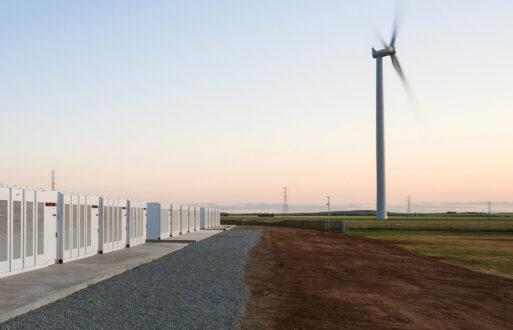“What is happiness? It’s just a moment before you need more happiness.”
Don Draper (Mad Men)
When it comes to technology, we all like shiny new things. Always have, and always will.
So whether it’s the latest iPhone or the PS5, we gotta have it.
Why?
In a word, “heuristics.”
Heuristics are mental processes that humans use to quickly form judgments, make decisions, and find solutions to complex problems.
The peak-end rule is a psychological heuristic in which people judge an experience primarily based on how they felt at its peak (i.e., the most intense point) and, at its end, rather than based on the total sum or average of every moment of the experience. Further, that “peak” experience can either be positive or negative.
While it makes no distinction, the peak-end rule poses unique challenges to software providers and consumers, especially in VUCA (Volatile, Uncertain, Complex & Ambiguous) energy markets.
Unique, affirming experiences enabled by technology quickly turn into the status quo. What initially wows consumers can soon become the baseline for their expectations.
Therein lies the conundrum for software providers.
“Even though success is a reality, its effects are temporary. You get hungry, even though you have just eaten.”
The gap between customer expectations and functionality in software has always presented a natural tension. But the complexity of volatile and uncertain energy markets, coupled with the unprecedented rate of technological change, makes it extremely difficult to keep up with ever-increasing consumer expectations.
We see these phenomena play out and are heavily discussed at market meetings. Disruptive technologies like DERs (Distributed Energy Resources) demand access to the RTO market. After a lengthy consensus on updating market rules to welcome new technologies, developers must begin the arduous task of writing code to accommodate the reshaped market design.
Implementing new rules is never fast enough for most. By the time a redesign is complete, the next technology disruption that was lying in wait demands attention.
Rinse and repeat.
Matching consumer expectations with system functionality is never a perfect match. However, bridging the gap between user expectations and their actual experience is critical for business survival.
What We Learned from Bain
In 2005, Bain & Company delivered a seminal study on the customer experience delivery gap. “Closing the Delivery Gap” surveyed 362 companies and discovered that 80% of them believed they delivered a “superior experience” to their customers. However, when customers were surveyed about the experience they received, only 8% classified it as superior.
That’s a blind spot.
Identifying the Delivery Gap

Why the gap? The Bain study cited two issues:
- Most business growth strategies damage the most critical source of sustainable growth; a loyal, profitable customer franchise.
- Good relationships are challenging to build and maintain.
Most business growth strategies damage the most critical source of sustainable growth; a loyal, profitable customer franchise.
Good relationships are challenging to build and maintain.
Service delivery/reception perception gaps are closed when companies treat their customers so well that they actually request more services and become reliable references for potential customers.
Obsessive customer focus ensures continuous deposits to the customer “trust account.”
However, as the peak-end rule teaches us, a new baseline of expectations is set each time you raise the performance bar. As Jeff Bezos famously stated, “Our customers are loyal to us right up until the second somebody offers them a better service.”
Customer experience and customer expectations are not the same.
More Recent Survey Data
According to Gladly’s 2021 Customer Expectations Report:
- 63% of customers fall in love with brands because of great service.
- 62% of customers will recommend brands to friends due to their great service.
- 45% of customers will stop buying a brand because of two bad service experiences.
- 19% of consumers believe customer service today is exceeding their expectations.
The exceptional customer service bar continues to rise, and if you are not the one raising it, somebody else is.
According to the research in Salesforce’s 2018 report, “State of the Connected Customer,” 76% of customers now report that it’s easier than ever to take their business elsewhere.
In its 2019 update to the same report, Salesforce highlighted the following eye-catching stats:
The Customer Experience Stakes Have Never Been Higher

Customer Expectations Are Driving Digital Transformation

So What?
In his 1978 classic, “Comes A Time,” Neil Young wrote:
Oh, this old world keeps spinning ’round.
It’s a wonder tall trees ain’t layin’ down.
There comes a time.
Those words aptly describe the state of the energy markets in 2021.
Head-spinning technological advances are bringing behind-the-meter generation and battery storage to the forefront of market design discussions.
The recent SolarWinds attack could accelerate broad changes in the cybersecurity industry, including a strengthened relationship between the federal government and the cybersecurity sector. The recent ERCOT debacle shined a light on the fragility of the U.S. power grid.
The massive acceleration of renewable energy across the country is outpacing the speed at which market operators adopt new rules and their ability to implement new software necessary to accommodate the new rules.
In the absence of a national energy policy, individual states and cities establish carbon reduction goals quicker than long-term planners can address important questions relative to reliability and resilience. And, of course, everyone wanted answers and solutions yesterday to incredibly complex problems.
None of this is new, and none of it will change, though strangely, the peak-end rule can solve complex problems.
Agile software development practices involve discovering requirements and producing solutions through self-organizing, cross-functional teams and collaboration with end-users.
Successful companies include the customer throughout their business processes, including product development. After all, people will enthusiastically support what they help to create.
A business must elevate its performance and service coincident with the rising bar of consumer expectations. If not, competitors will.
The (Michael) Bloomberg Terminal
I began my professional career on Wall Street in the fixed-income markets in 1986. Five years earlier, Michael Bloomberg was fired from his job at Salomon Brothers and subsequently used his personal savings to set up a data services company named Innovative Market Systems (IMS).
Bloomberg’s vision for IMS was based on his belief that Wall Street would pay a premium for high-quality business information delivered instantaneously on computer terminals in various formats.
IMS sold customized computer terminals that delivered real-time market data, financial calculations, and other analytics to Wall Street firms. He knew he hit it big when his product became known simply as “The Bloomberg.”
Though many companies, including Solomon Brothers, tried to unseat him as the king of financial data delivery, Bloomberg perfectly understood the peak-end rule well before behavioral economics began to appear in business academia. And he viewed the pressure to provide a superior customer experience as an opportunity and a privilege and that business success came down to a couple of simple rules:
1. Create a customer
2. Keep a customer
According to new research by Asurion, a global leader in helping people unlock the potential of technology, 80% of Americans experience tech-related frustration daily. Over half of us (53%) experience up to five tech frustrations a day, and nearly one in three (30%) become frustrated with their personal tech more than five times a day.
“No one wants to spend such a large part of their day trying to get their tech to work the way it should. After all, it’s the very thing that’s supposed to make our lives easier,” said Asurion spokesperson Bettie Colombo.
The peak-end rule teaches us that customers will judge a business based on their most intense interaction with it and how it resolves (good or bad). In the tech world, recent data strongly indicates that customers have itchy trigger fingers and are now ready to switch providers much more quickly than in the past.
Energy market participants have a lot on the line and deal in volatile, time-sensitive environments with significant and binding financial implications. Those realities, coupled with the evolving, complex challenges facing market operators, present unique risks and opportunities for software providers. The ones that get it right will earn loyal customers willing to serve as excellent references for new business.
Those that don’t address the challenges of ISOs/RTOs and their market participants will quickly lose clients and be unable to replace them.
PCI is proud to begin our 29th year of meeting and exceeding customer experiences and expectations. And we view the pressure to perform for our client partners as a privilege.







